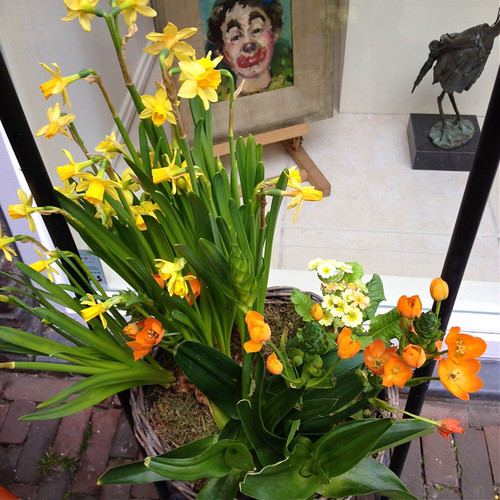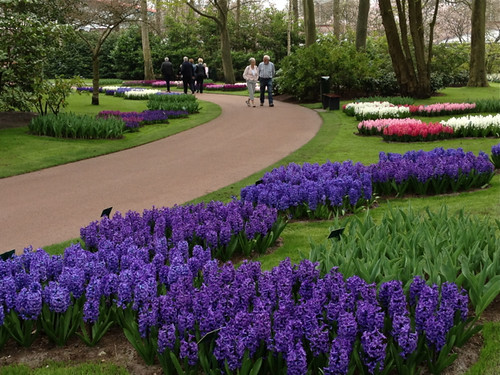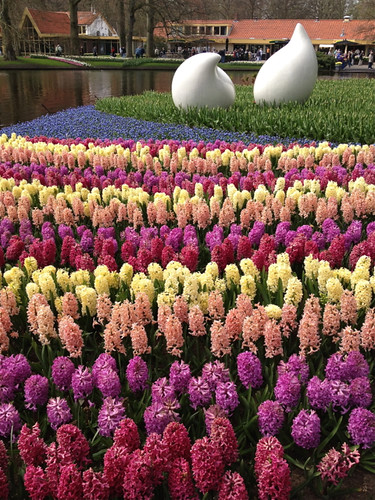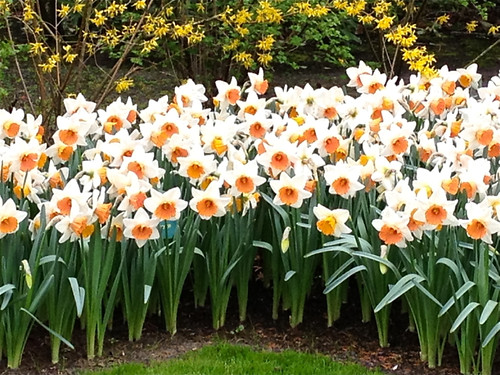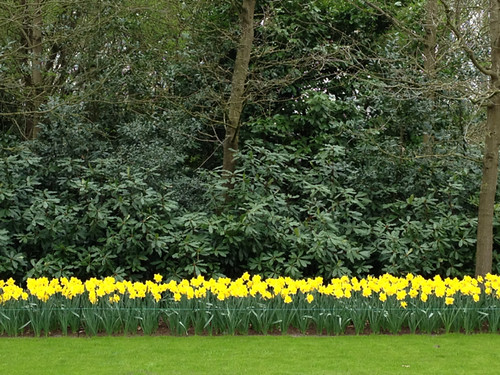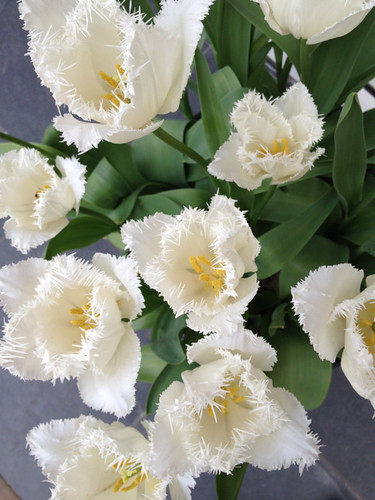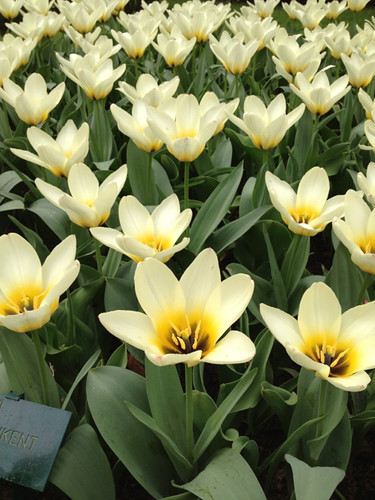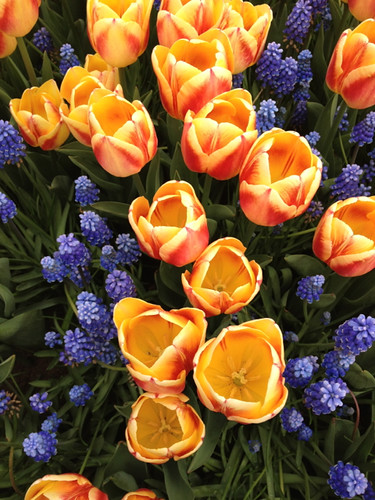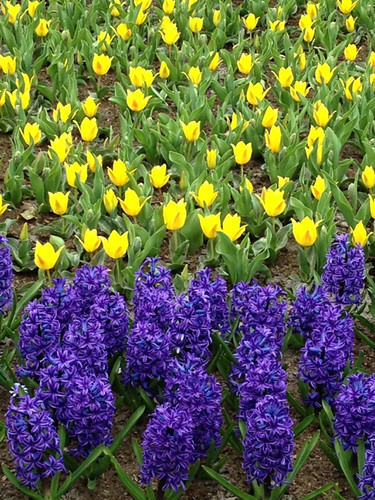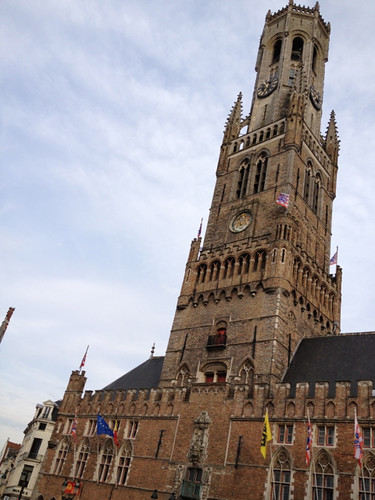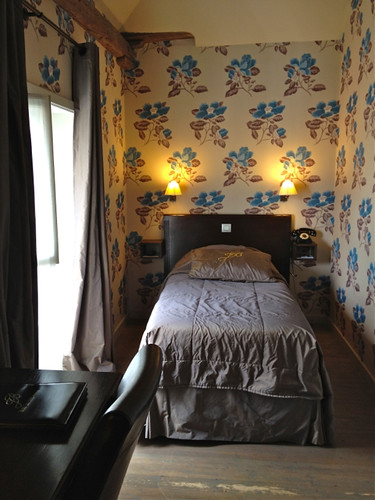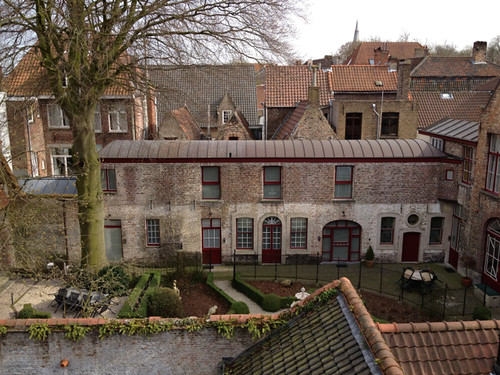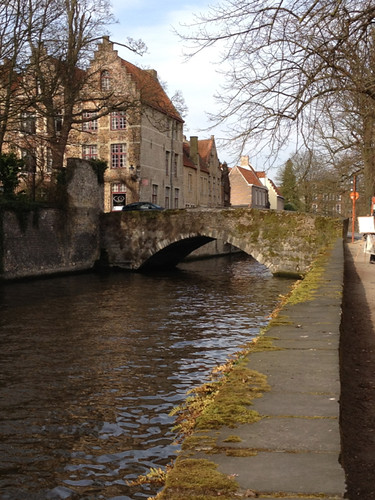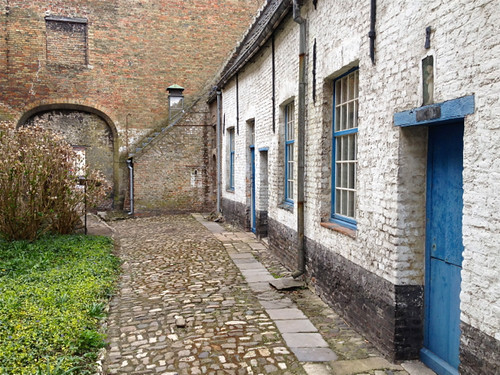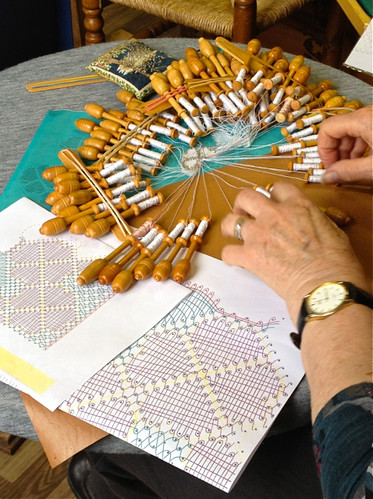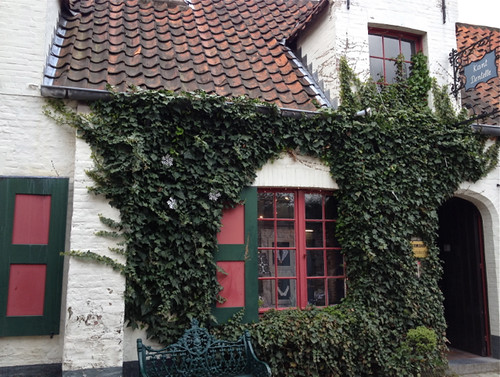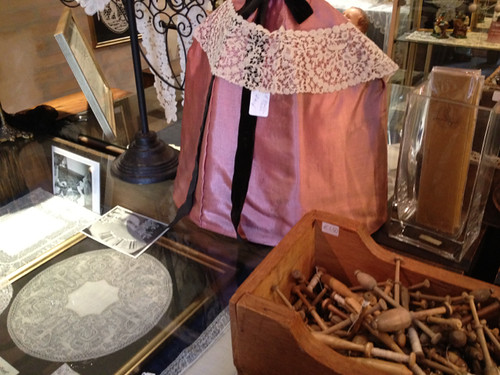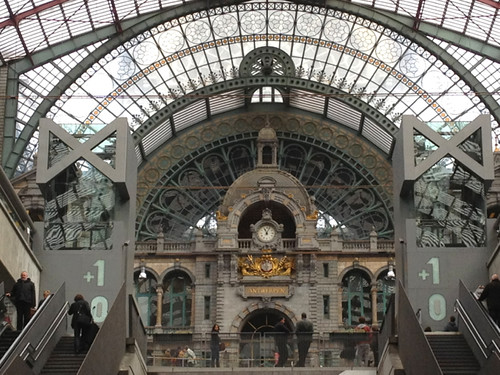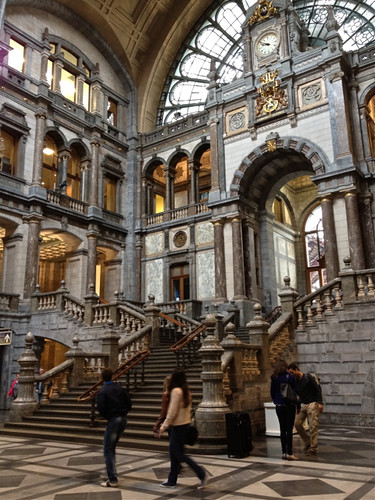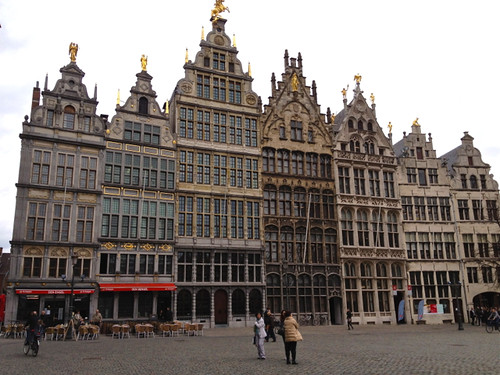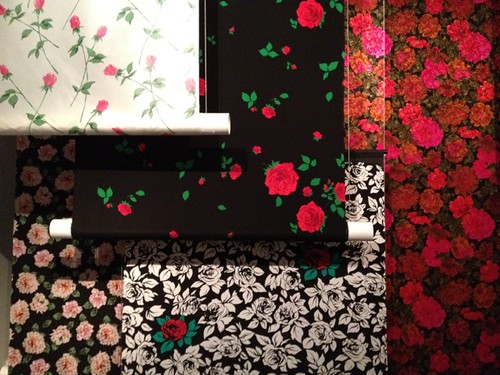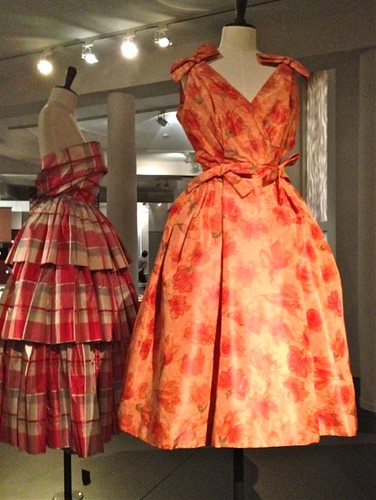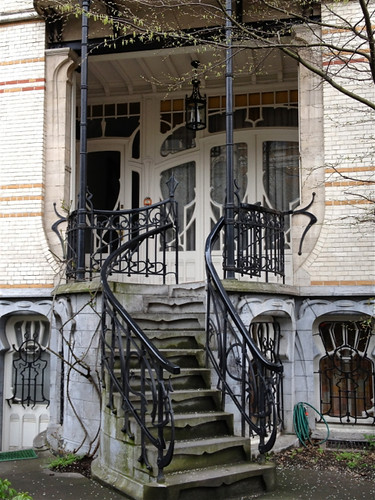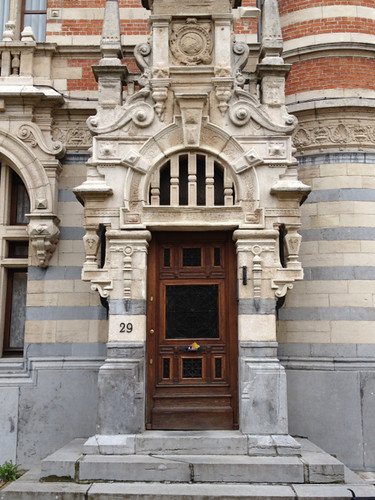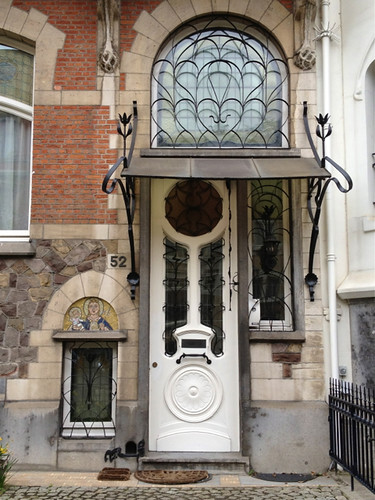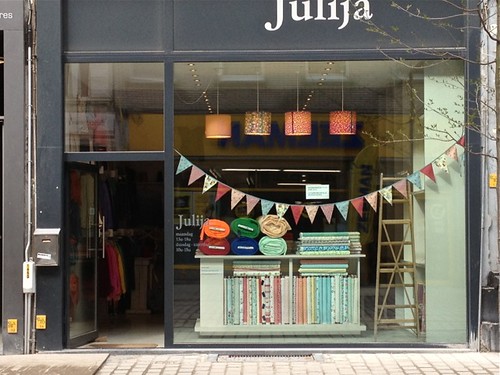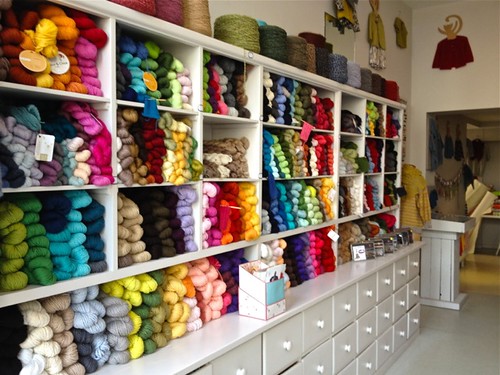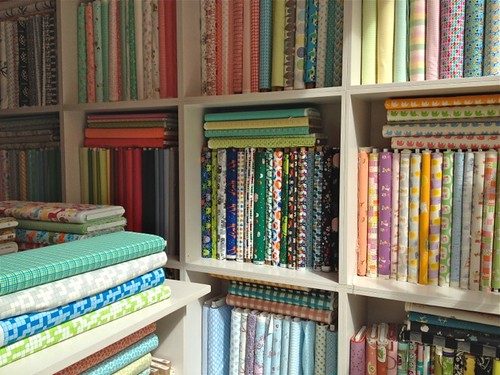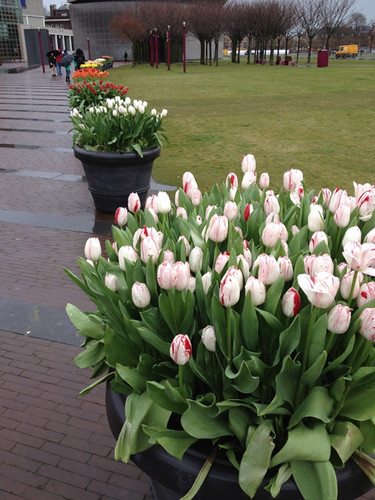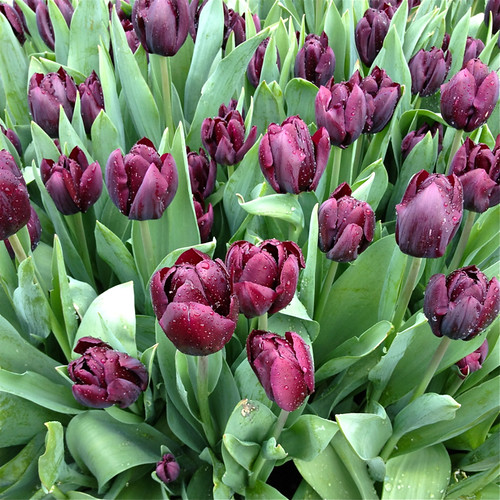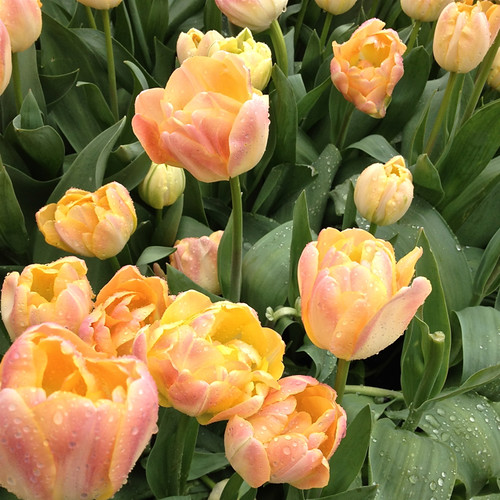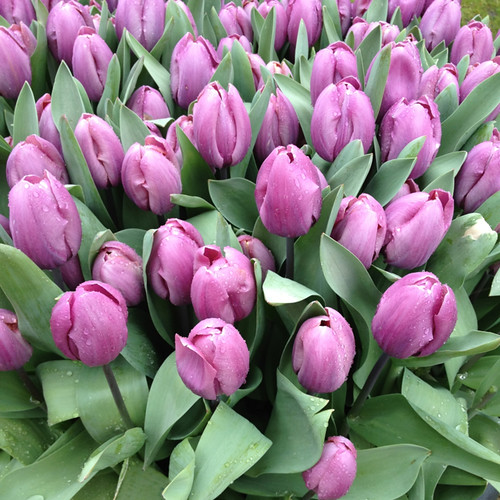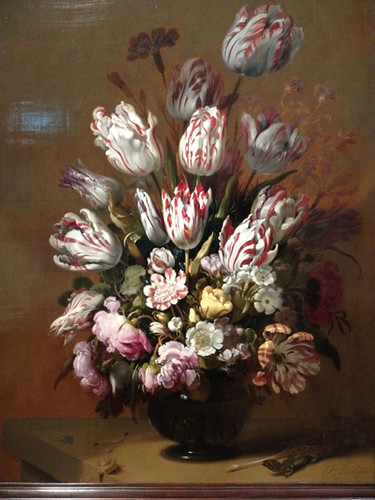I've been enjoying my leisurely time in Amsterdam - going to museums, hearing great concerts at the Concertgebouw, catching up with old friends, knitting, and just pottering. Amsterdam is the perfect place for pottering. The streets and canals meander and invite lingering and photographing, there are quirky and often beautiful specialist shops, and there are more coffee shops and places to stop for a glass of wine than you could imagine. Great places to rest when your feet are weary.
But what is amazing for an Australian is the ease with which you can travel out of Amsterdam. Within an hour on the train (in the case of Delft and many other places) or only 15 minutes (to Haarlem) you can be in a different city with its own complex, rich history.
There are always wonderful churches in these towns. In Delft there are actually two wonderful churches. There's the Oude Kerk (old church) with its fourteenth century leaning tower
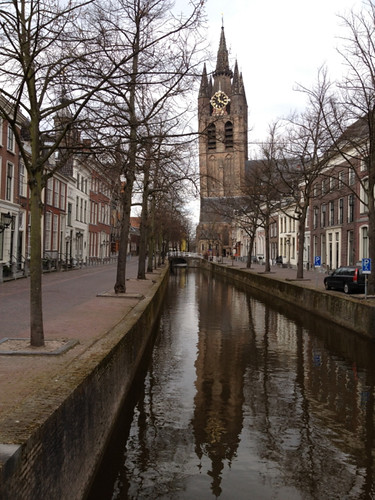
and its austere interior and simple stone marking the burial place of master artist Jan Vermeer who died deeply in debt:
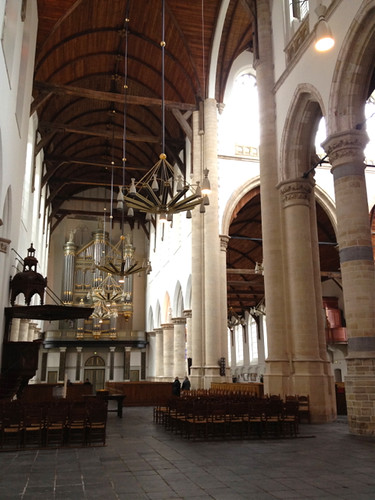

I visited the splendidly restored and recently reopened Rijksmuseum in Amsterdam today and discovered a 1654 painting of the Oude Kerk by Gerrit Houkgeest. While some of the detail, and most definitely the clothing of the visitors have changed, the general impression is still recognisable. Such a sense of continuity. More about the Rijksmuseum in another post.
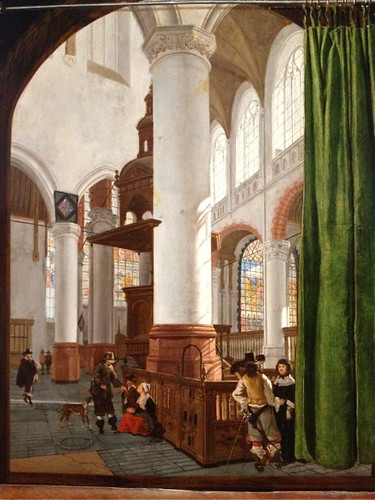
Then there's also the Delft Nieuwe Kerk (new church - I love the idea of a 'new' church that's more than 450 years old), built initially between the fourteenth and sixteenth century, though much of its current structure was restored after destruction by a fire in 1536 and a disastrous explosion in the national arsenal in 1645. The extraordinary 100 metre tall tower was added only in the nineteenth century. And no, I didn't climb to the top, wonderful though the view might have been.

Like the old church, the new church has an elegantly plain interior:
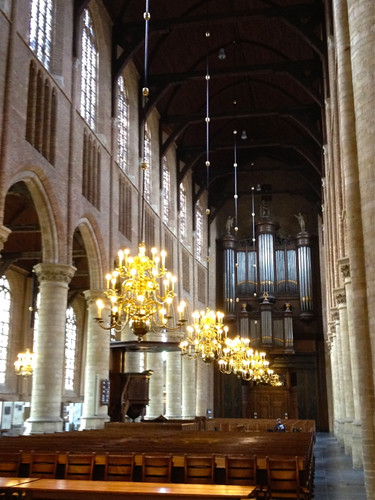
Both churches began their lives as Catholic churches and, until the latter part of the sixteenth century, would have been more elaborately decorated, with carved alterpieces and images of saints like grand churches and cathedrals in more southerly Europe. But after the 'Alteration' of 1578 when the Calvinists took civil power, Catholics were expelled from Amsterdam and surrounding cities and much of the great religious art that decorated the churches was destroyed or desecrated. Sort of like the cultural revolution in China, but 400 years earlier. However dreadful the destruction, I have a liking for the austerity of these great churches. You find yourself admiring the spaces created by the builders, rather than the decoration.
Lovely as these Delft churches are, my favourite is the Great Church of St Bavo in Haarlem, mainly constructed during the fourteenth and fifteenth centuries. It dominates the town square and old markets, and with ice-cream and souvenir shops and a ticket office squashed up against its walls it gives the impression that the rest of Haarlem has grown out of the church.

The exterior is not so remarkable, but the elegant proportions of the interior with its colonnaded side aisles, exquisitely decorated ceiling and eighteenth century organ have a quiet perfection.
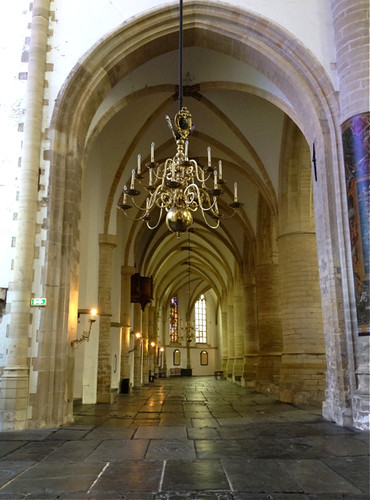
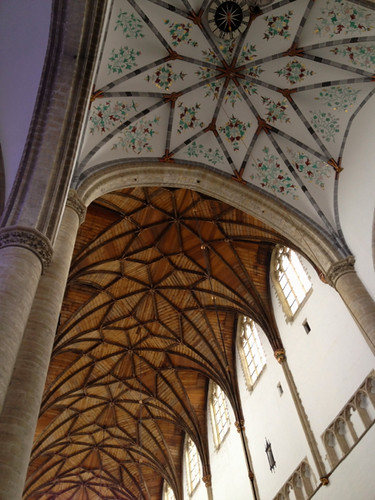
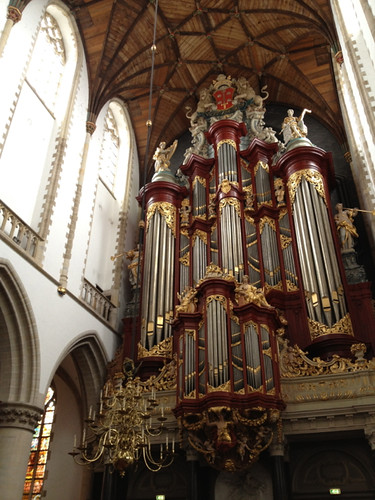
The church is beautiful, but it also has a kind of worldliness about it. The entire floor is composed of gravestones - around 1500 stone slabs whose inscriptions have worn over time. But you can still see that the stones often include descriptions of the worldly status and honours of those whose bones lie beneath. Then there are the beautifully modelled ships suspended near the brewers' chapel (I like the idea of a brewers' chapel):

The ships were gifts from the Shipbuilders' Guild in the sixteenth and seventeenth centuries and are modelled on the ships built in Haarlem at that time that brought such wealth to both Haarlem and Holland more generally through trade and commerce.
Maybe I've allowed myself to be a bit carried away by the churches - but I do enjoy a good church when I'm touristing! Of course these lovely towns have other attractions. You know you will find achingly lovely streetscapes such as these canal houses in Delft

or this neat row of seventeenth century houses in Haarlem

If you peer around corners and into lanes you'll find picturesque courtyard houses in Haarlem that, except for the bicycles, look as if they should be part of a golden age painting:

and such neatly kept houses in Delft that they satisfy every child's dream (and maybe those of some adults as well) of the perfect house.
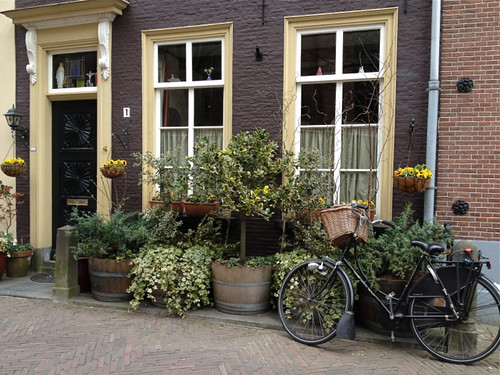
In Haarlem you will find the archetypal Grand Cafe on the Market Square with espaliered trees and outdoor tables and chairs just waiting for the long-delayed Spring to arrive:
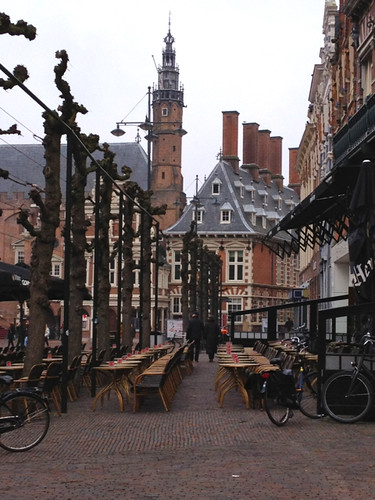
You might even spot a road-worker laying cobbles and wearing real workers' wooden clogs
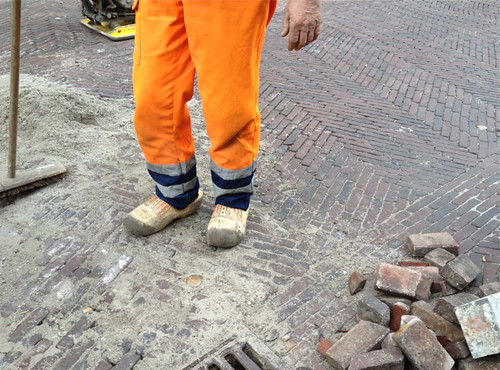
and, despite the late Spring, you can count on finding charming displays of flowers outside shops or houses and on restaurant tables. I love the fact that the Dutch love flowers (expect my blog to burst into tulip-mania any time soon!)
